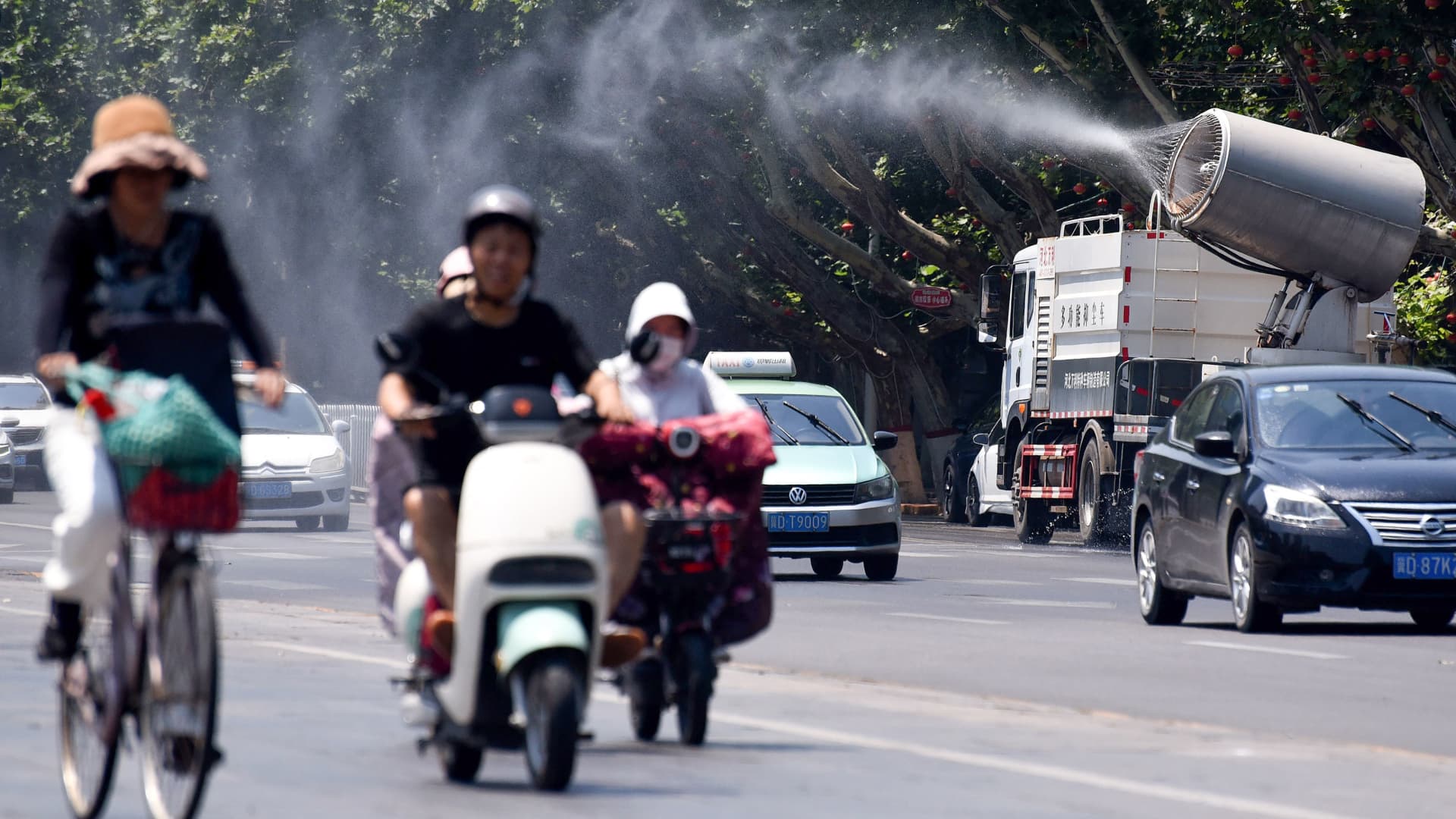Sam Meredith,CNBC 5 - 6 minutes
- The U.N. weather agency on Tuesday declared the onset of the major climate phenomenon, warning its return paves the way for a likely spike in global temperatures and extreme weather conditions.
- "Early warnings and anticipatory action of extreme weather events associated with this major climate phenomenon are vital to save lives and livelihoods," said Petteri Taalas, secretary general of the WMO.
- The warmest year ever recorded, 2016, started off with a powerful El Nino that helped to boost global temperatures.
El Niño has arrived.
The U.N. weather agency on Tuesday declared the onset of the major climate phenomenon, warning its return paves the way for a likely spike in global temperatures and extreme weather conditions.
The World Meteorological Organization estimated that there's a 90% probability of the El Niño event persisting through the second half of the year and it is expected to be "at least moderate strength."
It urged governments across the globe to respond to its declaration by taking immediate steps to help protect lives and livelihoods.
"The onset of El Niño will greatly increase the likelihood of breaking temperature records and triggering more extreme heat in many parts of the world and in the ocean," said Petteri Taalas, secretary general of the WMO.
"The declaration of an El Niño by WMO is the signal to governments around the world to mobilize preparations to limit the impacts on our health, our ecosystems and our economies," he said. Money Report
"Early warnings and anticipatory action of extreme weather events associated with this major climate phenomenon are vital to save lives and livelihoods."
The update follows a report from the National Oceanic and Atmospheric Administration in early June, which said El Niño conditions were present and "expected to gradually strengthen into the Northern Hemisphere winter."
'Yet another wake up call'
Separately, a WMO report in May, led by the U.K.'s Met Office, warned there is a 66% chance that the annual average near-surface global temperature between 2023 and 2027 will briefly surpass 1.5 degrees Celsius above pre-industrial levels for at least one year.
The 1.5 degrees Celsius threshold is the aspirational global temperature limit set in the landmark 2015 Paris Agreement. Its importance is widely recognized because so-called tipping points become more likely beyond this level. Tipping points are thresholds at which small changes can lead to dramatic shifts in Earth's entire life support system.
A multi-purpose anti-dust truck sprays water for cooling on a street during hot weather conditions in Handan, in China's northern Hebei province on June 27, 2023.
 A multi-purpose anti-dust truck sprays water for cooling on a street during hot weather conditions in Handan, in China's northern Hebei province on June 27, 2023.
A multi-purpose anti-dust truck sprays water for cooling on a street during hot weather conditions in Handan, in China's northern Hebei province on June 27, 2023.
"This is not to say that in the next five years we would exceed the 1.5°C level specified in the Paris Agreement because that agreement refers to long-term warming over many years," said Chris Hewitt, WMO director of climate services.
"However, it is yet another wake up call, or an early warning, that we are not yet going in the right direction to limit the warming to within the targets set in Paris in 2015 designed to substantially reduce the impacts of climate change," Hewitt added.
What is El Niño?
The El Niño Southern Oscillation system is composed of El Niño and La Niña — two opposite states of fluctuation in the Earth's climate system, which can have significant consequences on weather, wildfires, ecosystems and economies across the world.
El Niño — or "the little boy" in Spanish — is widely recognized as the warming of the sea surface temperature, a naturally occurring climate pattern which occurs on average every two to seven years.
An El Niño event is declared when sea temperatures in the tropical eastern Pacific rise 0.5 degrees Celsius above the long-term average. Episodes usually last nine to 12 months.
 The Met Office recently confirmed that it was the hottest June on record for the U.K. with an average monthly temperature of 15.8C.
The Met Office recently confirmed that it was the hottest June on record for the U.K. with an average monthly temperature of 15.8C.
The effects of El Niño tend to peak during December, but the impact typically takes time to spread across the globe. This lagged effect is why forecasters believe 2024 could be the first year that humanity surpasses 1.5 degrees Celsius. Global average temperatures in 2022 were 1.1 degrees Celsius warmer when compared to the late 19th century.
The warmest year ever recorded, 2016, started off with a powerful El Niño that helped to boost global temperatures.



